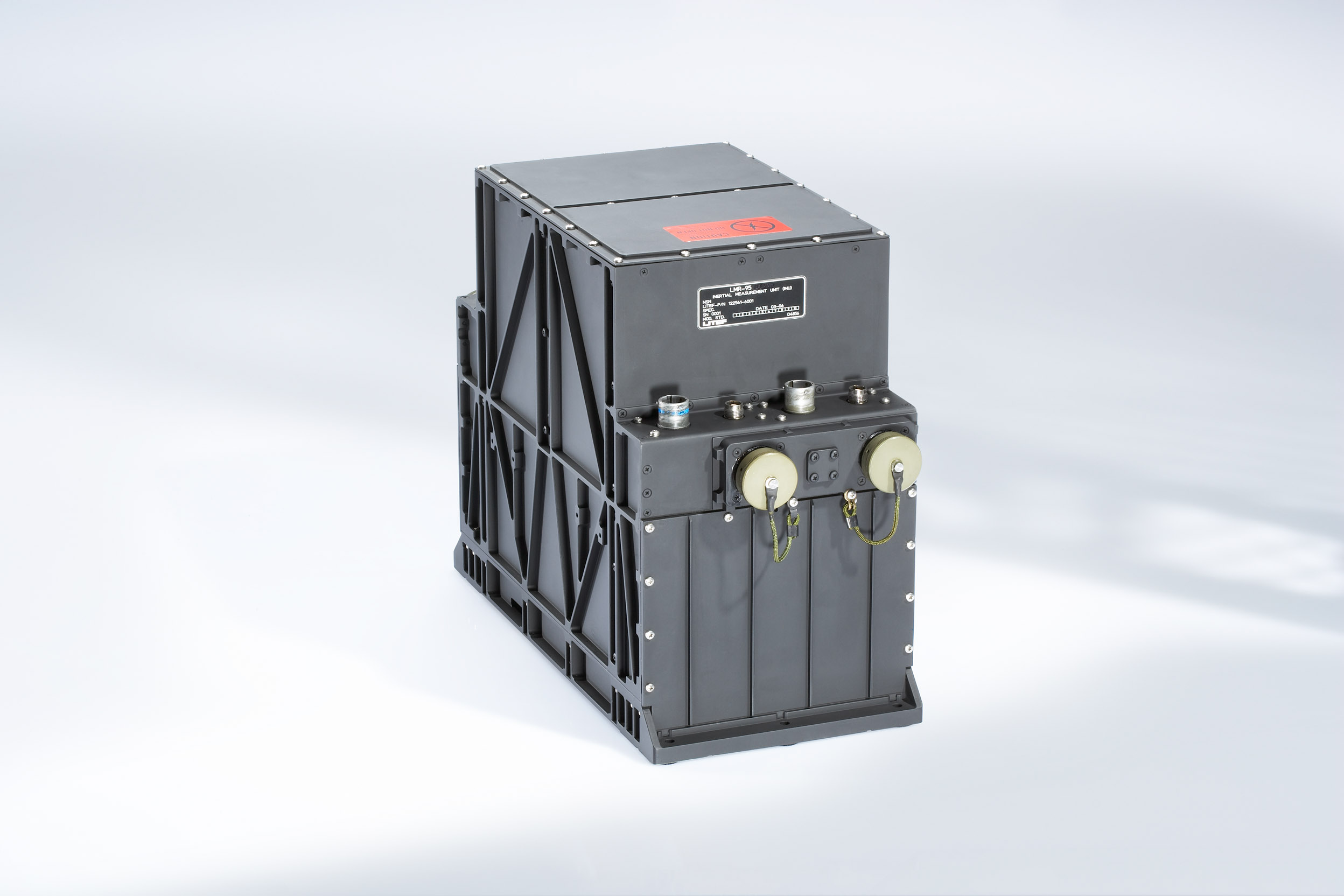With the invention of inertial navigation, navigation systems became available that were independent of optical and communications connections- today we would say: without GPS data/signals –Offered position data.
The US group Litton Industries developed this technology to the point where it was ready for use and series production and was the leading manufacturer of such systems for a long time. At the beginning of the 1960s, LITEF in Freiburg was the first company in Europe to mass-produce these navigation systems. The design and performance of the LN-3 systems then manufactured for the F-104G Starfighter were so successful that successor systems were developed and produced for the F-4 Phantom II aircraft of the German Air Force and later also for the PA-200 Tornado multi-role fighter aircraft.
Based on these experiences, LITEF has designed further generations of gyros and accelerometers – the crucial components of inertial navigation. In combination with the digital computers also developed by LITEF, this resulted in navigation systems that were and are used for armored land vehicles, missile and stabilization applications as well as for marine applications. Milestones in the company's history also include the development and production of computers and inertial measurement units (IMUs) for military aviation, such as: B. for platforms such as PA-200 Tornado and Eurofighter Typhoon.
As early as the 1970s, Great Britain was working on a successor to the F-4 Phantom and, at the latest after the first flight of the Soviet MiG-29 Fulcrum in the late 1970s, the “European Combat Aircraft” project (also known as the Hunter 90, now the Eurofighter) was launched Typhoon or EF2000) activates and accelerates.

Due to the deliberately created instability of the EF2000, challenging requirements were also placed on the flight controls. When it won the development contract for the inertial measurement unit (EF IMU) in the 1990s, LITEF took on the challenge and delivered this highly innovative system a few years later.
Die EF IMU ist der primäre Sensor des Flugregelungssystems und liefert primär Drehraten und Beschleunigungen und, als Sekundärfunktion, die Ausgabe von abgeleiteten Werten wie Kurs und Lage im Raum, die zum Manövrieren und maßgeblich zum Stabilisieren des EF2000 benötigt werden. Da es sich bei der EF IMU um ein flugkritisches System handelt, galten bereits in der Entwicklungsphase die höchsten Normen und Standards. Das System muss in einem Temperaturbereich von -40 bis 70 Grad Celsius fehlerlos funktionieren, G-Belastungen von über 12g aushalten und nach wenigen Minuten einsatzbereit und die Daten verfügbar sein. Auch magnetische Felder, hohe Schock- und Vibrationsbelastungen in jeglichen Manövern des Piloten dürfen die Datenqualität der EF IMU nicht reduzieren. Um dies dauerhaft zu gewährleisten, wurde auf bewährte Technologien und fundiertes Können gesetzt. Als Ergebnis sehen Sie hier eine Ein-Box-Lösung. Das System ist vierfach redundant aufgebaut, d. h. vier unabhängige Lanes (Kanäle), die elektrisch isoliert agieren, versehen mit vier Stromanschlüssen und vier Datenausgängen. Der Sensorblock besteht aus vier Kreiseln und acht Beschleunigungsmessern sowie einer sehr ausgereiften Software zur Fehlererkennung, Fehlerisolation und Fehlerkorrektur. Damit arbeitet ein sehr komplexes und ausgereiftes System seit vielen Jahren zuverlässig im Eurofighter Typhoon.

LITEF can also draw on many years of experience in the area of stabilization and missile applications. The fiber-optic sensors and inertial measurement units (IMUs) used are free of moving parts and therefore insensitive to shock and high vibration loads. The associated advantages lead to applications for military weapon stations, stabilization of optics, antennas and radar systems as well as in missiles and state-of-the-art guided missiles for various mission requirements. The high reliability and maintenance-free nature of LITEF products also offer low life cycle costs for the user. Future products will be supplemented by MEMS-based sensors and IMUs with variable accuracies.
Due to the further development of FOG and MEMS technologies, LITEF can now also offer inertial reference systems for aviation, which are characterized by low weight, low volume and low power loss with high accuracy of the sensor data. In addition, these heading/attitude reference and navigation systems offer excellent reliability and the ability to provide high-bandwidth, low-noise “hybrid” position and attitude information for navigation and flight control using external GNSS receiver data.
The combination of expertise from 30 years of civil aviation and six decades of military aviation is a solid basis that enables LITEF to develop innovative solutions for future autonomous unmanned and manned platforms, covering an even broader technological range.
In den Laboren von LITEF arbeiten die Entwicklungsteams an der Weiterentwicklung der Basistechnologien und an neuen Produkten. Aktuell liegt der Fokus z. B. darauf, die Genauigkeit der µIMU – einer auf mikroelektromechanischen Sensoren basierenden IMU mit einer Genauigkeit von etwa 3°/h (Kreisel) – schrittweise zu erhöhen. Gleichzeitig sollen Formfaktor und Leistungsaufnahme deutlich reduziert werden. Während die aktuelle MEMS-IMU noch ein Volumen von etwa 340 cm³ aufweist, wird die nächste Generation von MEMS-IMUs ein Volumen in der Größenordnung von nur noch ca. 100 cm³ aufweisen und gleichzeitig Sensoren beinhalten, deren Kreisel einen Offsetfehler von weniger als 1°/h haben. Damit eröffnen sich für die MEMS-Technologie anspruchsvollere Anwendungen, die derzeit noch von faseroptischen Kreiseln (FOGs) dominiert werden. In einem ersten Schritt entwickelt LITEF einachsige, robuste MEMS-basierte Kreisel in dieser Genauigkeitsklasse. Die erforderliche Technologie ist bei LITEF verfügbar und wird derzeit unter anspruchsvollsten Umweltbedingungen getestet und in die Serienreife überführt.
You will already be able to navigate with the next generation of MEMS gyros. MEMS technology thus becomes an enabler for small, autonomous flight applications. In order to achieve this ambitious goal, MEMS gyros that have the highest degree of internal symmetry will be necessary. In addition, the asymmetries that naturally exist in the sensor due to the accuracy of the manufacturing process must be compensated for.
Regardless of the respective application, all systems developed and manufactured at LITEF are ITAR-free and are characterized by high reliability and robustness, even under extreme environmental and mission conditions.

